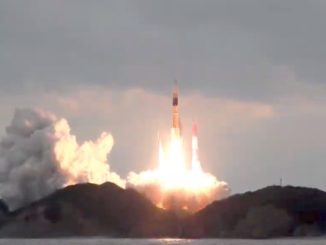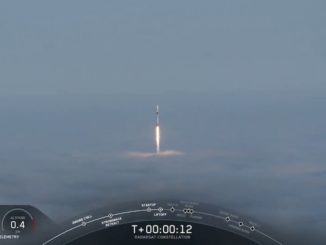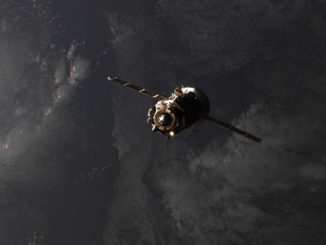A Russian satellite launched Tuesday from the Baikonur Cosmodrome in Kazakhstan, riding a Proton booster and Block DM upper stage toward a position in geostationary orbit to provide weather observations over Siberia, other parts of Russia’s Far East, and the Asia-Pacific region.
The Elektro-L 3 weather satellite lifted off from Baikonur atop a Proton rocket at 1203 GMT (7:03 a.m. EST; 5:03 p.m. Baikonur time) Tuesday to begin a journey of more than six hours to a high-altitude orbit some 22,000 miles (35,400 kilometers) above Earth.
The Proton rocket’s six RD-276 main engines ignited to thrust the heavy-lift booster off its launch pad at Baikonur at dusk. The six main engines, fed by hydrazine fuel, propelled the 189-foot-tall (57.6-meter) launcher toward the northeast.
After successive firings by the Proton’s second and third stage engines, the three-stage booster deployed a Block DM upper stage nearly 10 minutes after liftoff.
The Block DM, built by Energia and fueled by kerosene and super-cold liquid oxygen, ignited its main engine three times to first place the Elektro-L 3 weather satellite into a preliminary parking orbit, then to raise the orbit’s apogee, or high point, and finally to lower the orbit’s inclination to 0.6 degrees to the equator and circularize its altitude at around 22,000 miles (35,400 kilometers).
The upper stage released the 4,616-pound (2,094-kilogram) Elektro-L 3 spacecraft at 1840 GMT (1:40 p.m. EST) Tuesday, according to Roscosmos, the Russian space agency.
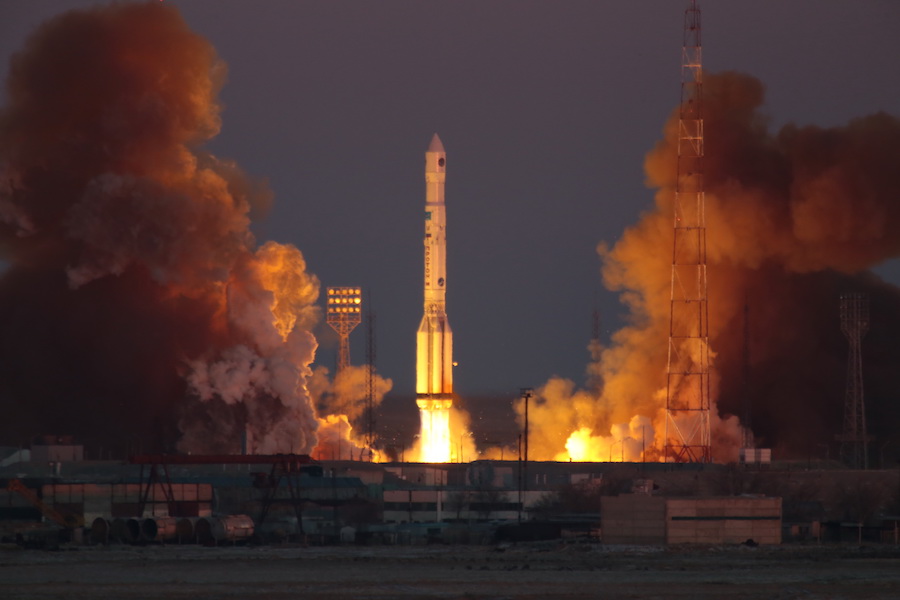
Designed for a 10-year lifetime and built by the Russian aerospace contractor NPO Lavochkin, the Elektro-L 3 satellite joins two previous Elektro-L weather observatories launched in 2011 and 2015.
NPO Lavochkin confirmed in a statement that the Elektro-L 3 spacecraft was deployed into the mission’s targeted orbit, and ground controllers took control of the satellite as planned. The satellite was expected to unfurl its power-generating solar panels and fine-tune its orbit over the equator, where its speed will match the rate of Earth’s rotation, giving the new weather sentinel a constant view of Russia’s Far East, the Asia-Pacific region, and much of the Pacific Ocean.
The Elektro-L 3’s planned observation post will be over the equator at 165.8 degrees east longitude, joining the other two operational members of Russia’s Elektro-L weather satellite fleet, which are parked in geostationary orbit at 76 degrees east and 14.5 degrees west.
The first two Elektro-L satellites launched from Kazakhstan on Ukrainian-made Zenit rockets. But officials switched the launch of the Elektro-L 3 spacecraft to a Russian-built Proton rocket due to rising tensions between Russia and Ukraine in the wake of Russia’s annexation of Crimea.
The Elektro-L satellites provide weather data to the Russian Federal Service for Hydrometeorology and Environmental Monitoring, or Roshydromet, Russia’s weather agency.
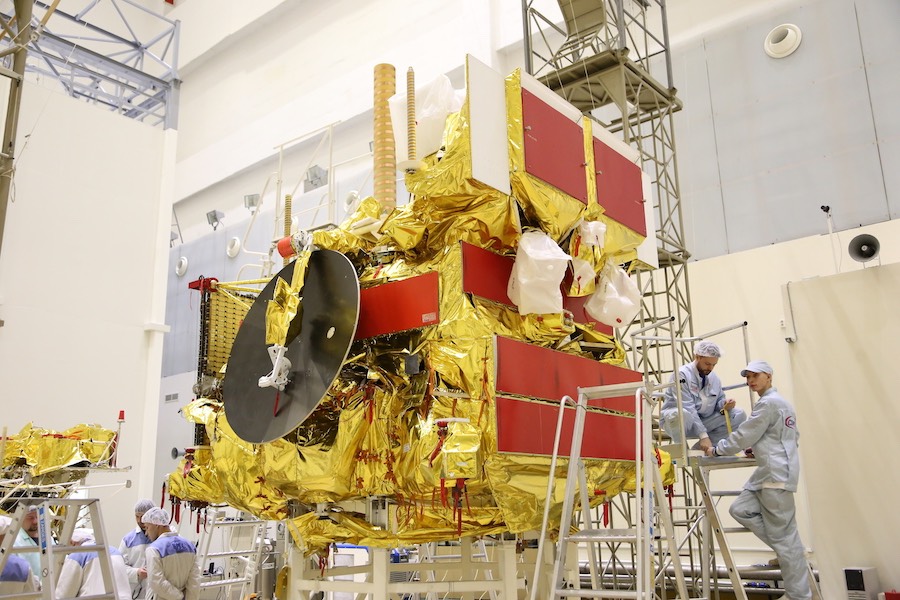
Like its two predecessors, the Elektro-L 3 satellite will capture images of storm systems and clouds across its coverage zone. The spacecraft will also measure sea states and ocean temperatures, track changes in snow cover, and collect high-altitude atmospheric data to help forecast conditions for air travel.
The satellite also carries instruments to monitor space weather and a search-and-rescue communications payload, according to information published by Roscosmos.
Tuesday’s launch from Kazakhstan marked the 423rd flight of a Proton rocket, and the fifth flight of the year by a Proton rocket, which is manufactured by Khrunichev. It was the 13th and final planned orbital launch from the Baikonur Cosmodrome in 2019.
Email the author.
Follow Stephen Clark on Twitter: @StephenClark1.

